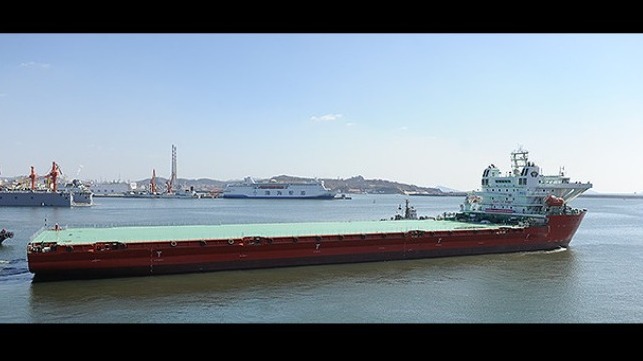Chinese Test Shows Potential for Ballistic Missiles on Merchant Ships

[By Malcolm Davis and Charlie Lyons Jones]
On September 15, China successfully launched the Long March-11 solid propellant launch vehicle off a merchant vessel in the Yellow Sea. This was the second such sea-based launch of a rocket conducted by China, with the first taking place on June 5 last year.
The launch, overseen by the Taiyuan Satellite Launch Centre in conjunction with leading ballistic missile producer the China Academy of Launch Vehicle Technology (CALT), was significant as the solid propellant technology used in the in the Dongfeng-21 and Dongfeng-26 is reportedly similar to that used in the Long March-11. The launching of the Long March-11 from a civilian vessel raises the prospect that China’s merchant fleet could be used to fire ballistic missiles in wartime.
While the Long March-11 is not a missile platform, reporting from the People’s Liberation Army Daily on the flight test noted that launching rockets off surface vessels has several strategic advantages. The report argued that a sea-based launch ‘increas[es] launch efficiency and rocket carrying capacity’ because it can occur closer to the equator, and allows for ‘the freedom to choose launch sites, [which can] effectively offset unwanted risks’ such as debris falling on populated areas. The report added that sea-based launch provides tactical flexibility, as land-based ballistic missile and rocket systems are fixed, easily targetable and require significant logistical support.
That said, problems linger in China’s capability to conduct sea-based rocket launches. Another report from the PLA Daily made clear that ‘the communications support [needed] for sea-based launch missions are extremely heavy-duty and face many challenges, including long transmission distances, highly complex equipment and tight schedules’. Overcoming these difficulties is likely to be a priority for China’s defence industrial base, as companies like CALT continue developing China’s capability to conduct sea-based launches of carrier rockets and ballistic missiles.
Malcolm Davis is a senior analyst and Charlie Lyons Jones is a researcher at ASPI. This article appears courtesy of ASPI's The Strategist, and it may be found in its original form here.
The opinions expressed herein are the author's and not necessarily those of The Maritime Executive.
